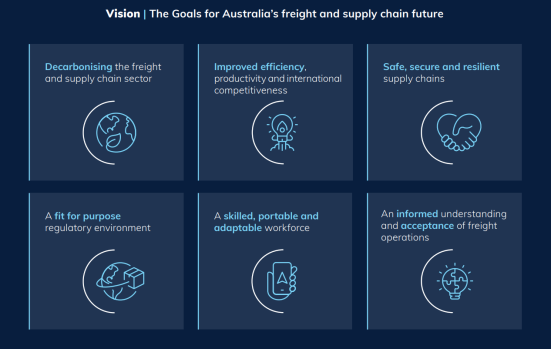The federal government has released a new freight and supply chain strategy.
With Australia’s freight task projected to grow 26 per cent by 2050, “it’s vital our roads, rails and ports can accommodate increasing freight movements with resilience, efficiency and emissions-reduction front of mind,” Minister for Transport Catherine King said.
Since the country’s freight strategy was first released in 2019, Australia’s supply networks have experienced significant setbacks including a global pandemic, shifts in geopolitical dynamics, extreme weather events and a workforce shortage. “Now more than ever, Australians need supply chains that are resilient and able to withstand disruption,” says a statement.
In order to support supply chains, the updated strategy outlines four priority areas: productivity, resilience, decarbonisation and data. The strategy also sets collaborative goals for governments and industry across freight modes.

Accompanying the strategy is a national plan which outlines a set of actions that government and industry will deliver over the next five years.
Key actions include:
- Developing a national freight resilience plan to ensure a consistent and coordinated response to significant supply chain disruptions.
- Developing a freight infrastructure investment framework to guide infrastructure investment decisions in freight networks across Australia.
- Conducting safety research on batteries and zero-emission power technologies for freight vehicles and locomotives as well as promoting the uptake of safety and productivity boosting technology.
- Modelling the current and future freight and supply chain network, to consider what is needed to support its efficiency and effectiveness into the future.
The strategy and action plan will set the direction for governments “to achieve a holistic, coordinated multi-modal approach” that supports the businesses and people involved in Australia’s freight and logistics sector.
“The journey of goods from farm-gate, factory or port to the shopping aisle or building largely goes unnoticed, except in those rare instances where something in the supply chain goes wrong,” Ms King said. “Without viable and reliable freight networks Australia stops.”




Leave a Reply